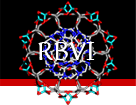

 about
projects
people
publications
resources
resources
visit us
visit us
search
search
about
projects
people
publications
resources
resources
visit us
visit us
search
search
Quick Links
Recent Citations
Structure and mechanism of the plastid/parasite ATP/ADP translocator. Lin H, Huang J et al. Nature. 2025 May 15;641(8063):797–804.
Sensing ceramides by CYSLTR2 and P2RY6 to aggravate atherosclerosis. Zhang S, Lin H et al. Nature. 2025 May 8;641(8062):476-485.
Structure of mitochondrial pyruvate carrier and its inhibition mechanism. He Z, Zhang J et al. Nature. 2025 May 1;641(8061):250–257.
Structures and mechanism of the human mitochondrial pyruvate carrier. Liang J, Shi J et al. Nature. 2025 May 1;641(8061):258-265.
Previously featured citations...Chimera Search
Google™ SearchNews
March 6, 2025
Chimera production release 1.19 is now available, fixing the ability to fetch structures from the PDB (details...).
December 25, 2024

|
October 14, 2024
Planned downtime: The Chimera and ChimeraX websites, web services (Blast Protein, Modeller, ...) and cgl.ucsf.edu e-mail will be unavailable starting Monday, Oct 14 10 AM PDT, continuing throughout the week and potentially the weekend (Oct 14-20).
Previous news...Upcoming Events

UCSF Chimera is a program for the interactive visualization and analysis of molecular structures and related data, including density maps, trajectories, and sequence alignments. It is available free of charge for noncommercial use. Commercial users, please see Chimera commercial licensing.
We encourage Chimera users to try ChimeraX for much better performance with large structures, as well as other major advantages and completely new features in addition to nearly all the capabilities of Chimera (details...).
Chimera is no longer under active development. Chimera development was supported by a grant from the National Institutes of Health (P41-GM103311) that ended in 2018.
Feature Highlight

Gallery Sample

Mutations that inactivate the tumor suppressor p53 are found in over 50% of human cancers, and most of the cancer-associated mutations are within its DNA-binding domain. The image shows a tetramer of the p53 DNA-binding domain complexed with DNA (Protein Data Bank entry 2ac0). The tetramer subunits are shown as light blue, green, orange, and yellow ribbons, with red spheres marking several major "hot spots" of mutation. The DNA is shown in purple and blue. (More samples...)
About RBVI | Projects | People | Publications | Resources | Visit Us
Copyright 2018 Regents of the University of California. All rights reserved.